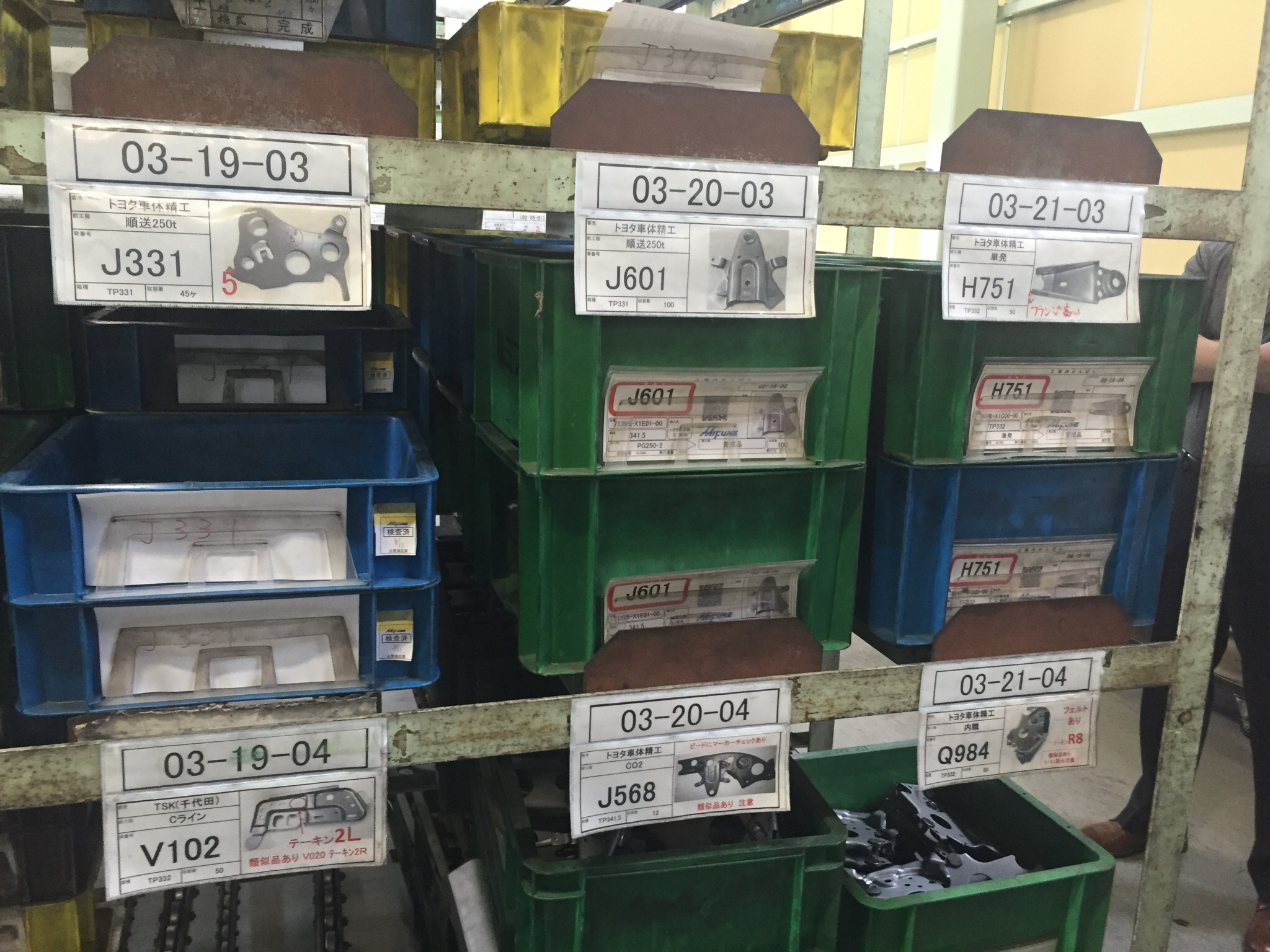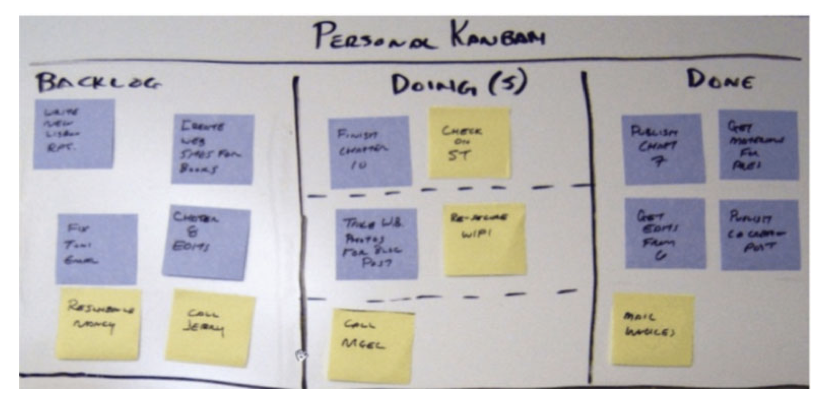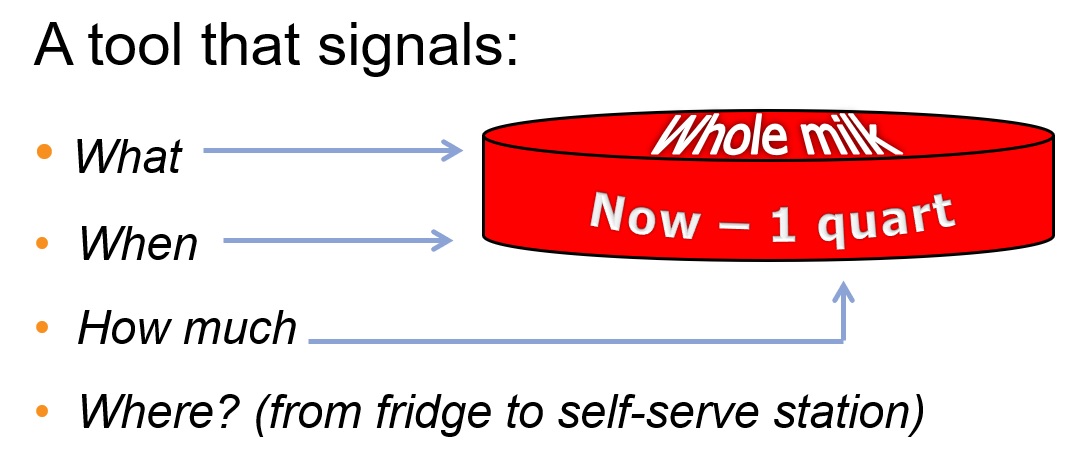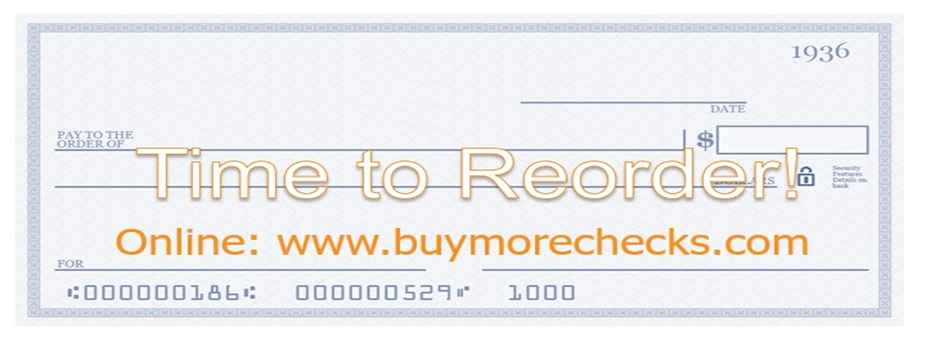What do you see here? An ad? A reminder? What I see with my lean shades is an everyday example of lean–in this case what’s commonly referred to as a kanban card. In our Lean Lexicon we define this as “a signaling device that gives authorization and instructions for the production or withdrawal (conveyance) of items in a pull system. The term is Japanese for ‘sign’ or ‘signboard.’”
Kanban represents a key principle of lean practice. What you see below are examples of traditional kanban cards. What do you see? What makes these more than mere labels?

The kanban helps communicate what, how much, and where. It helps prevent outages of materials without relying on inventory and helps to provide just the right amount, in just the right place, at just the right time by giving you instructions just in time. In essence, this is what the check reminder does. It tells you what to order and where so that you receive your new checks before you run out and it provides this reminder at the point of use.
Like many lean thinkers, LEI’s Deb McGee saw an opportunity to bring lean principles home. In this article, Deb shares the lunchbox kanban system she implemented to improve the morning routine.
We are often asked, “How does this apply outside of manufacturing?” Personal Kanban, a wildly popular productivity approach pioneered by Jim Benson, helps demonstrate the applicability of kanban in knowledge work.

In the services industry, one coffee chain uses a rather practical kanban: the lid of the milk that needs replenishing.

It is important to remember that a kanban is more than a mere replenishment system and that one lean tool does not a lean system make. A kanban serves a critical role within a much larger context.
What about you? Where do you see kanban in your everyday life?






